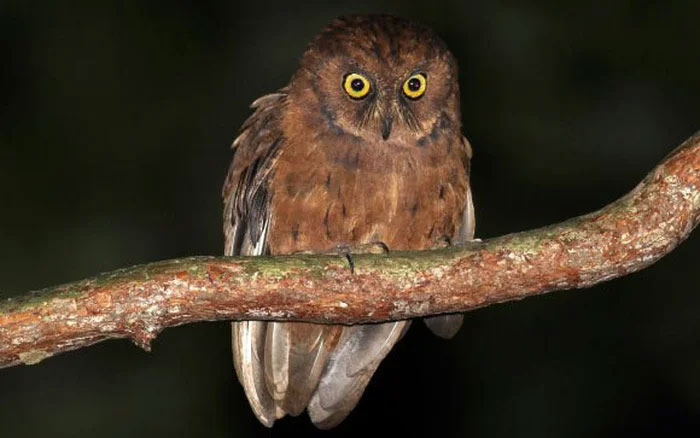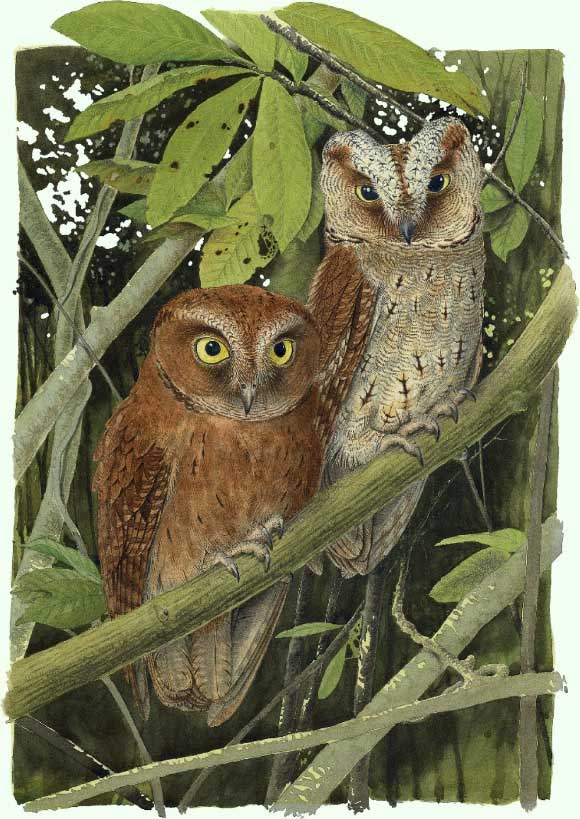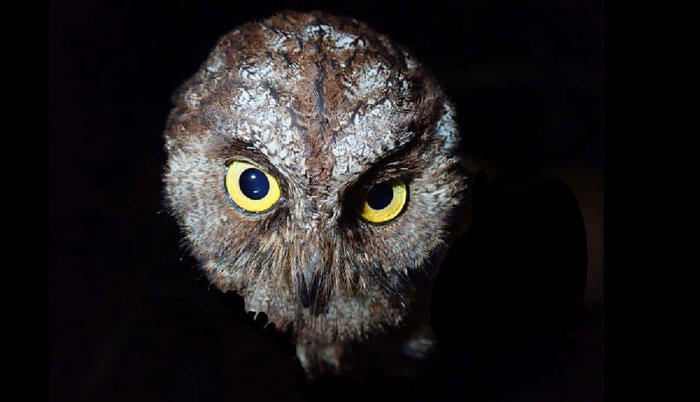Entomologists have accidentally discovered a new species of owl belonging to the genus Otus, residing in the forests of Príncipe Island, part of the Democratic Republic of São Tomé and Príncipe in Africa.
Otus is a genus of owls in the family Strigidae, primarily found in the Old World. First introduced in 1769 by naturalist Thomas Pennant, it is the largest genus of owl, comprising over 50 species. Members of this genus typically exhibit various shades of brown, aiding in their camouflage and resembling the bark of trees.
These birds are relatively small, with both males and females; however, females are generally slightly larger than males.
“The discovery of a new bird species is always a cause for celebration and an opportunity to engage the public on biodiversity issues,” said lead author Dr. Martim Melo from CIBIO and the University of Porto, along with his colleagues.
“In this age of human-driven extinction, a significant global effort is always necessary to document what may soon be lost.”
“Birds are perhaps the most well-studied group of animals. Therefore, discovering a new bird species in the 21st century highlights both the reality of field exploration aimed at documenting biodiversity and the effort to promote such curiosity is likely to succeed more when combined with local ecological knowledge, the involvement of sharp amateur naturalists, and persistence.”

Príncipe Scops Owl (Otus bikegila), a newly named owl species found on Príncipe Island – a 53 square mile island off the western coast of Africa. This owl species was first confirmed by scientists in 2016; however, some local residents believe it may date back nearly a century to 1928. It has yellow eyes and predominantly brown plumage, inhabiting the tropical forests of the island.
The newly described species, named Príncipe Scops Owl (Otus bikegila), appears at low elevations in the old native forest of Príncipe Island, located in the Gulf of Guinea, about 220 km off the coast of Gabon.
This species is currently limited to the uninhabited southern part of the island and within the Príncipe Obô Natural Park.
Researchers stated: “The discovery of a new species assessed as highly threatened clearly demonstrates the current biodiversity crisis.”
“On a positive note, the area where the Príncipe Scops Owl occurs is fully included in the Príncipe Obô Natural Park, which we hope will help protect this species from extinction risk.”
“While it may seem strange for a bird species to remain undiscovered by science for so long on such a small island, this is not an isolated case when it comes to owls.”
Phylogenetic analysis by the research team indicates that the Príncipe Scops Owl originated from the first colonization of the islands in the Gulf of Guinea, being a sister group to the owls that include the African mainland scops owl (Otus senegalensis), São Tomé scops owl (Otus hartlaubi), and Pemba scops owl (Otus pembaensis).
This new species currently inhabits an area of approximately 15 km2. Within this small area, the density of the owls is relatively high, with an estimated population of around 1,000 to 1,500 individuals.

All of Príncipe Island, part of the Democratic Republic of São Tomé and Príncipe, has been extensively surveyed to determine the distribution and population size of the new species. According to a supplementary study published yesterday in the journal Bird Conservation International, this bird can only be found in the remaining old native forests of the island. This area is located in the uninhabited southern part of Príncipe. The birds occupy a small space nearly four times the size of Central Park in New York, with a population of about 1,000 to 1,500 owls.
“We propose that this species be classified as Critically Endangered due to its small range, along with its occurrence at a single location and inferred continuous decline in range, habitat area, number of mature individuals, and the extent, level, and quality of its habitat,” the scientists noted.
“Effective conservation of the Príncipe Scops Owl requires regular monitoring and further studies focusing on its breeding and nesting capabilities.”
“Widespread support for the conservation of the Natural Park is crucial to ensure the protection of this species and the rich endemic forests of Príncipe that it depends on.”

The research team has proposed that the International Union for Conservation of Nature add this bird species to the Red List and classify it as “Critically Endangered,” the highest level of threat, due to the concentration of this bird in a small area. The research team plans to continue monitoring the species to learn more about the population size. They noted that a bright spot for conservation is that the habitat of this new bird is fully included in the protected Príncipe Obô Natural Park.


















































